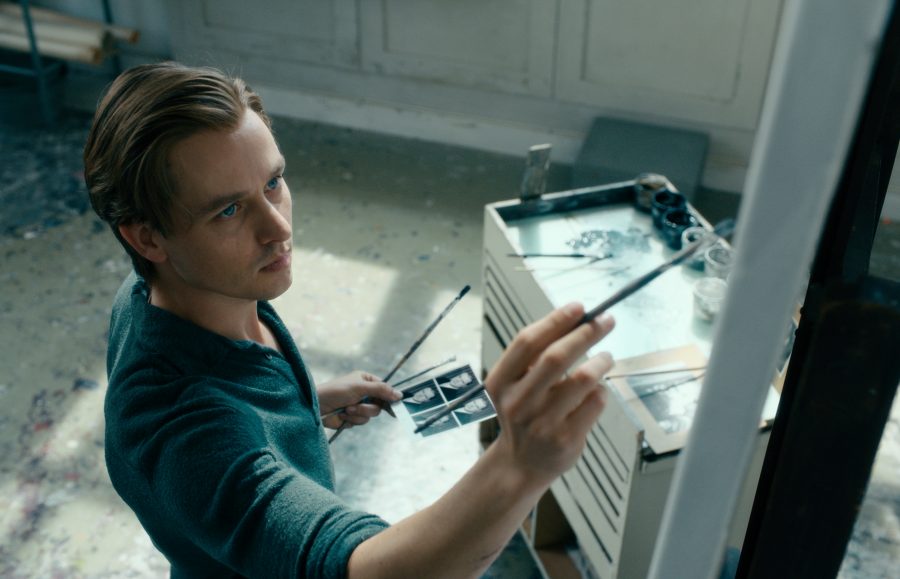After watching his 188-minute period epic “Never Look Away” — loosely based on the life of German artist Gerhard Richter — two things became clear about German filmmaker Florian Henckel von Donnersmarck: he loves art and he loves his country. But it is not necessarily unconditional love. Donnersmarck’s passion comes in the form of acknowledging both the beauty and errors in the history of his loves.
The director has proved to have an affinity for German history previously seen in his 2006 Oscar-winning feature debut “The Lives of Others” which followed the life of a Stasi officer in East Germany in the 1980s. In his third feature, Donnersmarck expands his canvas to explore 30 years in Germany’s past through the life of painter Kurt Barnet (Tom Schilling), who lives through Nazi Germany as a child and eventually escapes to West Germany during the time of the Berlin Wall as an adult.
Despite its lengthy run time, “Never Look Away” is an absorbing drama in large part due to its technical aspects. Caleb Deschanel’s cinematography — for which he got his sixth Oscar nomination — is gorgeous, capturing drastically different eras of Germany with pristine detail. The costume and production designs, handled by Gabriele Binder and Silke Buhr respectively, is immaculate and further build the authenticity of the story. Max Richter’s score is lovely and bold as if the music is ready to sweep audiences off their feet on its own. The film produces images that resemble paintings and sounds that are fit for sonatas and together make this glossy period piece an immersive viewing experience.
The film’s excellent craftsmanship makes up for the flaws within its shallow character work. Kurt is less of a protagonist than he is a hollow vessel for Donnersmarck to fill his artistic and political views with. Schilling is barely able to elevate the character from the page, but a talented supporting cast luckily aids him to make up for his shortcomings and that of the screenplay. Sebastian Koch, who earlier worked with Donnersmarck on “The Lives of Others,” is the standout performance as ex-Nazi doctor Carl Seeband, a man evading war crimes and the father of Kurt’s wife Elizabeth (Paula Beer). While Schilling only appears to play Kurt in his college years and after — Cai Cohrs plays him as a child — Koch is the only lead actor to appear throughout the film, playing a man who is afraid to reckon with his sins. Donnersmarck uses his character to not only highlight the past horrors of Germany but criticize those who try to ignore the mistakes of the country.
But Donnersmarck’s attention to history is larger than one character. The director structures the film’s plot by juxtaposing the evolving political ideologies of Germany with Kurt’s progression as an artist.
The most dramatically rich section of the film follows Kurt in his college years when he is forced to paint “democratic” — how a professor of his describes it — murals that inspire the working class. Kurt’s artistic struggles at the time coincide with the socialist ideology of East Germany, and his work is forced to reflect the era in which he lives in. This section also involves the most out of the supporting cast as it pairs Kurt’s creative stagnation with his rebellious relationship with Elizabeth and how her father interferes because he believes Kurt’s genes are improper. (During World War II Carl once operated on Kurt’s aunt who was suspected of being a schizophrenic.)
On the page, Carl’s remorselessness would probably come across as generic, but Koch infuses an interesting combination of guilt and deceit into his performance and adds dimensions to what could have been a one-note character. He is often driven by fear, and even though it is coming from a very troubling place, he becomes a terrifying villain through his conviction that his fears are justified and that he must eliminate them. Ina Weisse plays his wife Martha, and their chemistry feels deliberately imbalanced to give glimpses into a fragile marriage that has to be covered up to maintain their social status. Beer is effortlessly charming as Elizabeth and often outshines Schilling in most scenes. Even with the abundance of sex scenes, Beer’s talents still feel properly used in the second hour. She carries much of the dramatic weight when the relationship escalates and she has to confront her parents about a pregnancy, or when she reveals to Kurt her hidden feelings about her father’s past as a Nazi.
Donnersmarck’s confident direction elevates the melodrama into a gripping romantic tale and relates how socially regressive East Germany was through Kurt’s college studies and Carl’s intervention with his relationship.
Kurt’s time in West Germany is depicted in stark contrast — he attends an avant-garde academy where every artist is granted an independent workspace; his professor is liberating, and the art of the time feels gloriously progressive and experimental. Unfortunately, this shift is where the film loses its sprawling epic feel and becomes as aimless as Kurt’s abstract process. The supporting cast is also abandoned. In the last hour, Elizabeth only appears on screen for sex scenes or to pose for Kurt’s paintings. Carl’s presence as a strong antagonist becomes muddled as Kurt’s real enemy ultimately becomes himself — except he was never that interesting as an individual to start off.
Ultimately, the relationship Donnersmarck is really invested in is between art and politics. The artist is influenced by the ebb and flow in societal ideologies and their work reflects these changes. But, society is also reinforcing or being impacted by images in art which is why Donnersmarck goes out of his way to show how controlling professors or even common people try to be of Kurt’s art — they know it is powerful and they try to inhibit him but this film is his journey of experimenting with different forms and finding the freedom to express his voice clearly. Though its focus is on German history and art, Donnersmarck’s message is universal and for most of the movie he executes his ideas wonderfully.
Email Guru Ramanathan at [email protected]
























































































































































